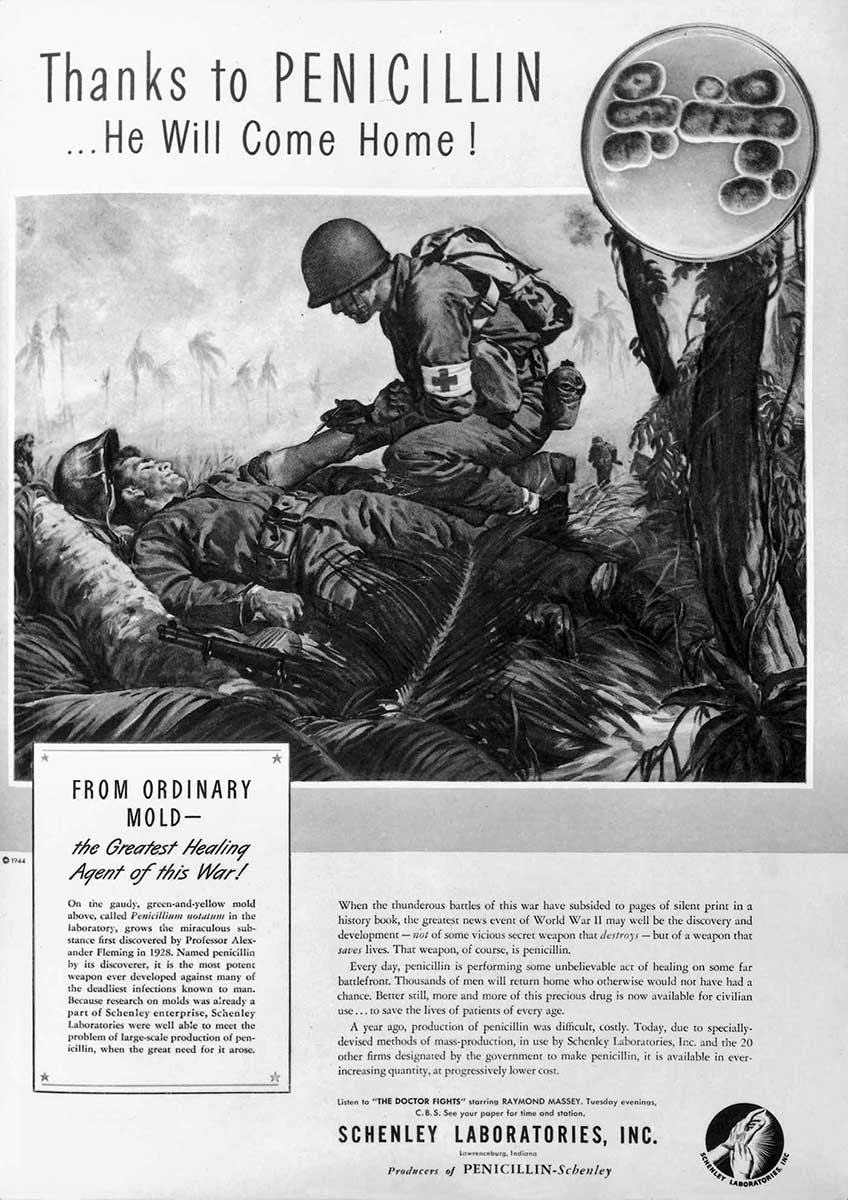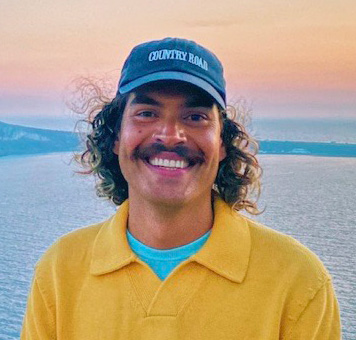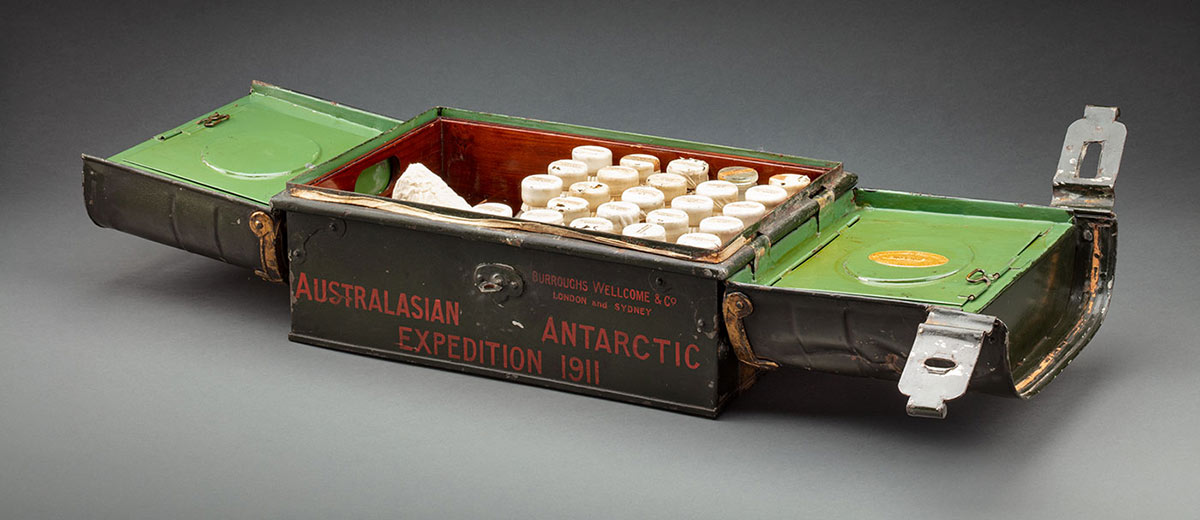As the race to find a vaccine for Covid-19 continues, we look at some pioneering moments in medicine captured in the Museum’s collections.
Penicillin

Penicillin was discovered in 1928 by Alexander Fleming. In 1940 it was made medically useful by a team of scientists led by Australian Howard Florey and German refugee Ernst Chain.
Penicillin was the world’s first broadly effective antibiotic. Many diseases that used to be deadly are now easily cured with the drug.
The story goes that Fleming discovered it by accident when he noticed that bacteria wasn’t growing around one of his blue-green mould samples.
Fleming grew the mould and sent it across the world. It was discovered that the mould was Penicillium notatum and that it released a substance that killed bacteria.
Fleming tried to mass-produce a stable form for over 12 years. He never succeeded.
In 1938 Howard Florey brought together a team of scientists, including Ernst Chain, at Oxford. They tried to grow the mould but quickly found it to be very difficult. Eventually rooms at Oxford were filled with the mould but output was still very low.
After trials on mice were successful, they moved to trials on humans. At first the results were mixed, but once the process was refined, they found the drug to be extremely effective.
With the help of the United States government, the drug was mass-produced and saved thousands of lives during World War Two. In 1945 Fleming, Florey and Chain received the Nobel Prize for medicine.
Douglas Mawson medical chest
In 1913 the Australasian Antarctic Expedition sailed from Hobart for Antarctica with the hope of returning by 1913. The expedition was led by Douglas Mawson, with the intention to establish three bases.
At each of the new bases they would conduct scientific research. Mawson was foremost a scientist, and was not as intent on claiming parts of Antarctica as some of his counterparts.
The Museum has in its collection one of four medicine chests made by Burroughs Wellcome & Co. Only three chests went on the expedition, this one remained behind.
While that might not have been so great for the explorers, it means this chest is in immaculate condition.
Fred Hollows collection
The Fred Hollows collection features portable ophthalmology equipment used for eye examinations and mountain-climbing gear that belonged to eye surgeon Fred Hollows.
Professor Fred Hollows was an Australian surgeon and humanitarian who restored eyesight to thousands of people around the world.
In the 1960s Hollows became Professsor of Opthalmology at the Univeristy of New South Wales. In this position he urged the government to create the National Trachoma and Eye Health Program. A trachoma is a bacterial infection that causes pain and blindness but is treatable.
During 1976 and 1978 the program tested more than 100,000 people and treated over 27,000. Nearly half of Australia’s Indigenous population were found to have trachoma.
Fred Hollows’ work and legacy are continued through the Fred Hollows Foundation, which operates in 25 countries. Our audio on demand includes an event at the Museum in 2016, during which panellists reflected on Hollows’ achievements.
20 May 2016
Remembering Fred Hollows
We’ll keep bringing objects, collections, exhibitions and programs from the vault as part of the Museum from Home experience. Stay tuned!
In our collection

